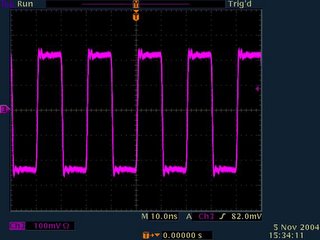
I know there are already many websites which claim that Altera Serial Configuration Devices, a.k.a. EPCS devices, can be replaced by some lower cost devices. This post is just to give you more confidence on the availability of other cheaper configuration solution for Cyclone series and Stratix II FPGAs.
Altera introduced EPCS devices at the same time the Cyclone device is announced. Traditionally, the cost of the configuration devices (EPC family) for the Altera FPGAs are quite expensive, compared with the cost of the FPGAs. Most of the FPGA users want almost zero cost for the FPGA configuration solution since the configuration device is mostly a combination of a simple controller and a non-volatile memory that stores the configuration bitstream. Therefore, when the so-called "cheapest FPGA family", Cyclone FPGA was launched by Altera, Altera also took the initiative to provide a cost efficient configuration solution for the Cyclone FPGA. The traditional configuration solution for Altera FPGAs prior to Cyclone FPGA requires a simple controller to load the configuration bitstream from a non-volatile memory and write to the FPGAs during configuration. This kind of configuration methodolgy is called passive configuration. The passive configuration can be either in serial form or parallel form, depending on the available configuration modes of the selected FPGAs. Active Serial configuration was first available in Altera Cyclone FPGA family. During the active serial configuration, the FPGA will write out the Read Bytes instruction to the EPCS device and then continuously read the data out from the serial flash from the address 0x000000 until the FPGA is configured. The smart approach greatly reduces the configuration cost by putting the simple controller in the FPGA itself. That means, the configuration cost is only left with the non-volatile memory only. As a result, the SPI serial flash is chosen to store the configuration bitstream as it is low cost, low pin count and easy to control from the FPGA.

Nonetheless, engineers are usually very calculative people. The EPCS price list, if you check from the Digikey website, looks attractive at the first glance due to the sudden price drop on the configuration solution for an Altera FPGA. As time goes by, engineers realize that the EPCS device is none but a very standard serial flash. And, a standard serial flash should cost much lower than an EPCS device with the same memory capacity. I grab some data from the Digikey website. For an example, an EPCS1 device costs USD$3.50 but a ST’s M25P10-A serial flash from ST costs as low as USD$1.10, which is a huge difference! Imagine if you are just targeting the Altera smallest Cyclone device with slowest speed grade, EP1C3T100C8 (costs USD$10.70 quoted by Digikey), you will be paying too much for the configuration solution with EPCS1. Don’t you agree? M25P10 can equally do the job well at lower cost. Why not? Don’t bother whether they are exactly the same die or not. Both devices commands and timing specifications meet the active configuration controller (embedded inside Cyclone FPGA) requirement. Even the Quartus II programmer tool recognizes ST’s M25P10-A, M25P40, M25P16 and M25P64, as EPCS1, EPCS4, EPCS16 and EPCS64, accordingly. Perhaps there are still other cheaper alternative than ST’s M25P family.
In fact, the serial flash can do even more other than the configuration solution. You can use it to store the general-purpose data! You will always find out that the serial flash always has more than enough to store the configuration bitstream, especially if you turn on the configuration bitstream compression in the Quartus II software tool. So, don’t waste the rest of the memory in the serial flash, furthermore, they are non-volatile memory, which is often useful to keep some serial numbers, identification numbers, calibration data, tracking numbers, etc. And, the microprocessor program data! For an example, you can save the NIOS II ELF file in the serial flash and boot from the serial flash after power-up. For that reason, you may need to choose a serial flash with a bigger density, to store not only the configuration data, as well as the microprocessor program data. That way, you don’t need to source another flash device to store the microprocessor data. How big the serial flash required is determined by the code size of your program. Sometimes, instead of using an EPCS4 device just to store the configuration bitstream, I will choose an EPCS16 replacement (USD$ 16.25 from Digikey), ST’s M25P16 (USD$ 4.56 from Digikey) to be my Cyclone, Cyclone II or Straitx II FPGA configuration solution as well as the storage for my NIOS II ELF file, not to mention some general-purpose user data.
//////////////////////////////////////////////////////////////////////////////////////////////////////////////////////////////////////
Disclaimer: The information on this post is for informational purpose only. The author reserves the right not to be responsible for the topicality, correctness, completeness or quality of the information provided. Liability claims regarding damage caused by the use of any information provided, including any kind of information which is incomplete or incorrect, will therefore be rejected.










